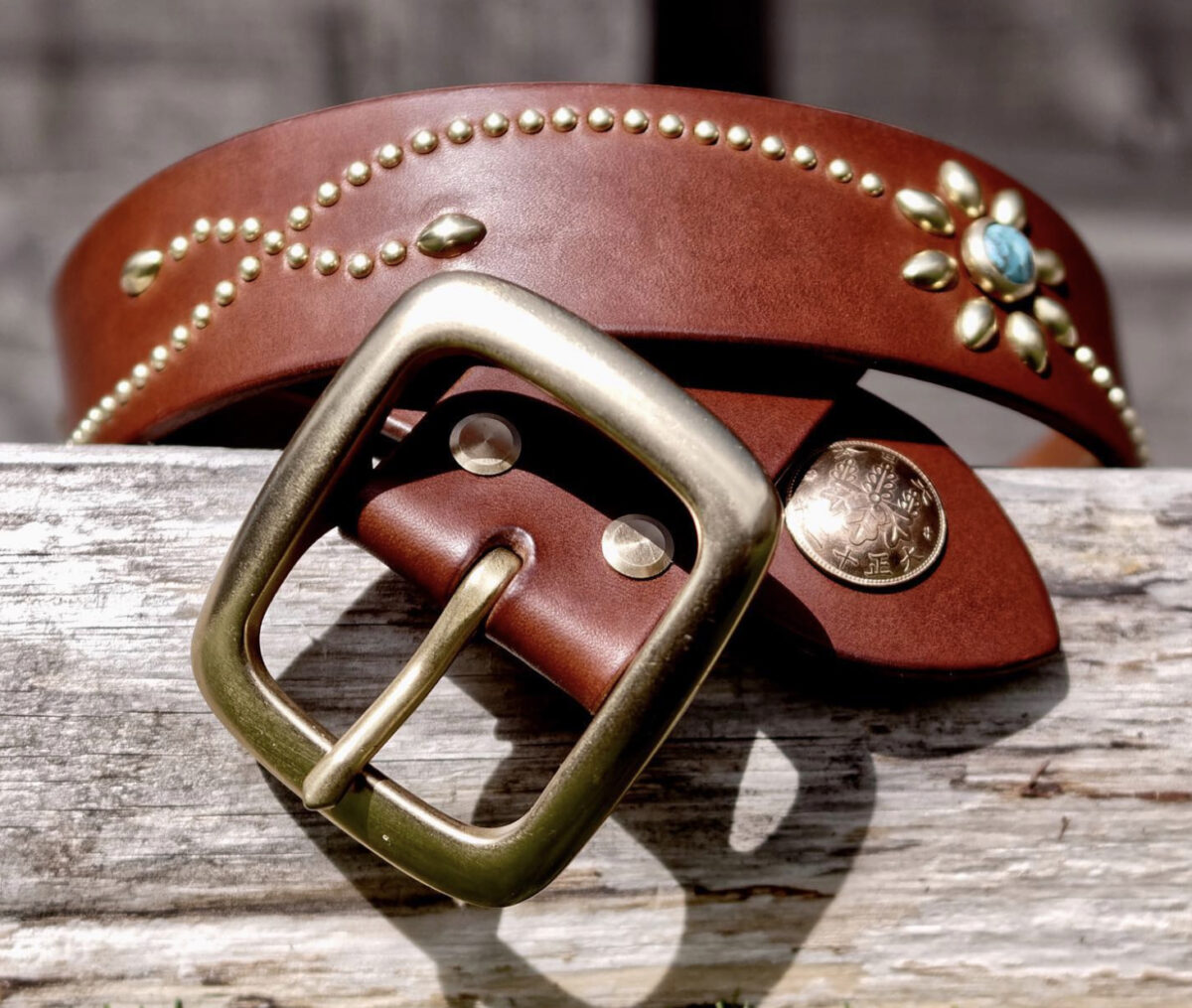What makes a good belt? Talking with custom belt maker Michael, or Duke as I know him (and will call him in the interview) on the denim forum Superfuture and Instagram, there’s at least two sides of the coin. The sole purpose of holding up our jeans and meeting the crowd’s expectations on one hand, the many layers of craftsmanship that goes into pushing a belt from good to excellent on the other hand.
It has spurred my interest in knowing more about leather and the craft. Maybe this conversation with Duke will stir up something in you too. Let’s dig in!
A custom belt is not necessarily good
So, what does make a good belt? In Duke’s mind there’s no clear answer to it. It can pretty much take on any form, even a piece of string could qualify if that’s what the wearer wants. There’s an arrogance in proclaiming a belt is good simply because it’s cut from the finest leather, hand stitched and adorned with a silver buckle.
“I think a good belt is the one that’s been created specifically to the customer’s requirements and one that he or she will want to wear often.”
To make something joyous for the wearer, that belt that keeps being worn over the years, there are many different skills needed to make it: measuring; cutting, edging, skiving; carving; sewing; painting; adding jewels, studs, ornamentation etc. But not every belt needs every skill.
All parts of the process should be relevant to make something that the customer enjoys, be it an off-the-peg belt or something very specific that the customer is after.
It’s not some boastful arrogant talking, Duke doesn’t want to hear any talk about being called a craftsman, but in the lines I see someone who cares for the craft and details that go into making a good belt.
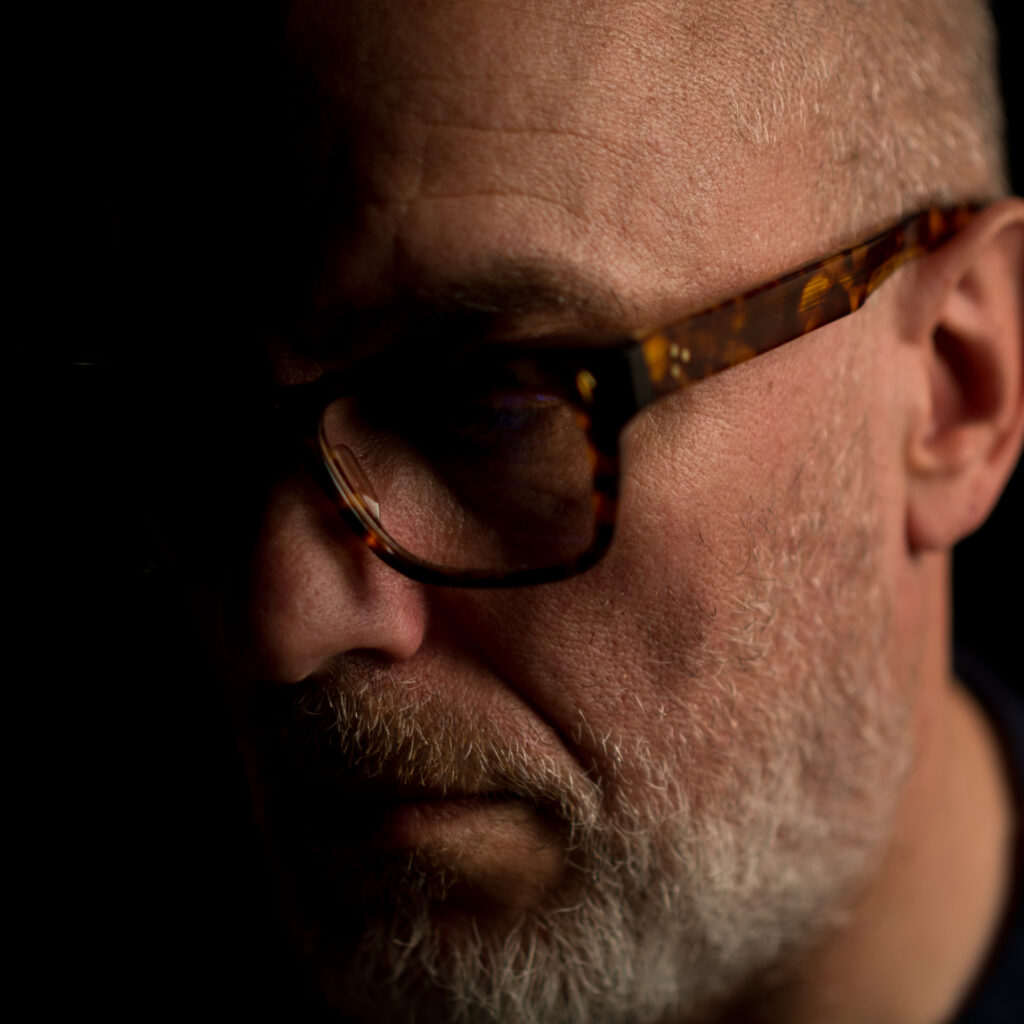
Twists and turns
But let’s rewind the tape first before diving into the belt making properly. Duke grew up in the United Kingdom in a family of steelworkers, with both his dad and granddad in the profession. It has played a big part in influencing his attitudes with a dislike for bullshit and shallow people (who are fools to themselves, according to Duke).
“My mother always said I don’t suffer fools at all even though I have a lot of patience.”
Speaking with Duke it all makes sense that he likes honesty. It’s a straightforward conversation with a lot of kindness at heart. It doesn’t come as a surprise that it translates into his belt making and customer service, maybe even the very core of what he does, but more on that in a bit.
“Effectively I signed my own death warrant with regards to my career which was made worse because it coincided with the covid pandemic; c’est la vie.”
He was the first person in the family to get a degree and used to work as a consulting engineer. But now the situation is different after his employer wanted him to run the Middle East group while Duke wanted to be close to his daughter. Unemployed and caring for his four year old with multiple disabilities, reality is no longer the same.
Sometimes it just happens
It’s funny how a project that lies close to your heart sometimes can burst through the surface from seemingly out of nowhere.
At first, Duke didn’t have any thoughts about making belts at all. Only trying to find out more about leather in general after feeling that the chatter on social media didn’t even scratch on the surface. He ended up buying pieces of leather, experimenting and reading a lot of how leather is made.
The push that finally sent him down the rabbit hole and road of beltmaking came from two coincidences: one of the most disappointing purchases in years (a Warehouse belt) and a chat with his friend Ryan, founder of kids denim brand Nippers that I interviewed a while back.
“Arrogantly I thought that even I could make a better belt (than the Warehouse one).”
Talking about items they liked but never bought led Duke and Ryan into a discussion of novelty belts, resulting in Duke deciding to try his hands at making a belt. Already knowing the basics and the general process, why not jump into the deep end?
Of course, it wasn’t an instant success. As Duke recalls it, the belt was ok, not as good as he wanted, but definitely wearable. Much like how the interest took off as about learning more about leather, the belt for Ryan gave a lot of insight on the process – how leather responded to cutting, punching and glueing, how different leathers respond to each other and so on.
The itch was there to experiment some more. Starting off making a belt for a friend and then folk who knew Duke from denim forums like Denimbro and Superfuture as well as Instagram. It all kinda just grew from there. There never really was an idea to set it up as a business; no timescale, budgets or business plan.
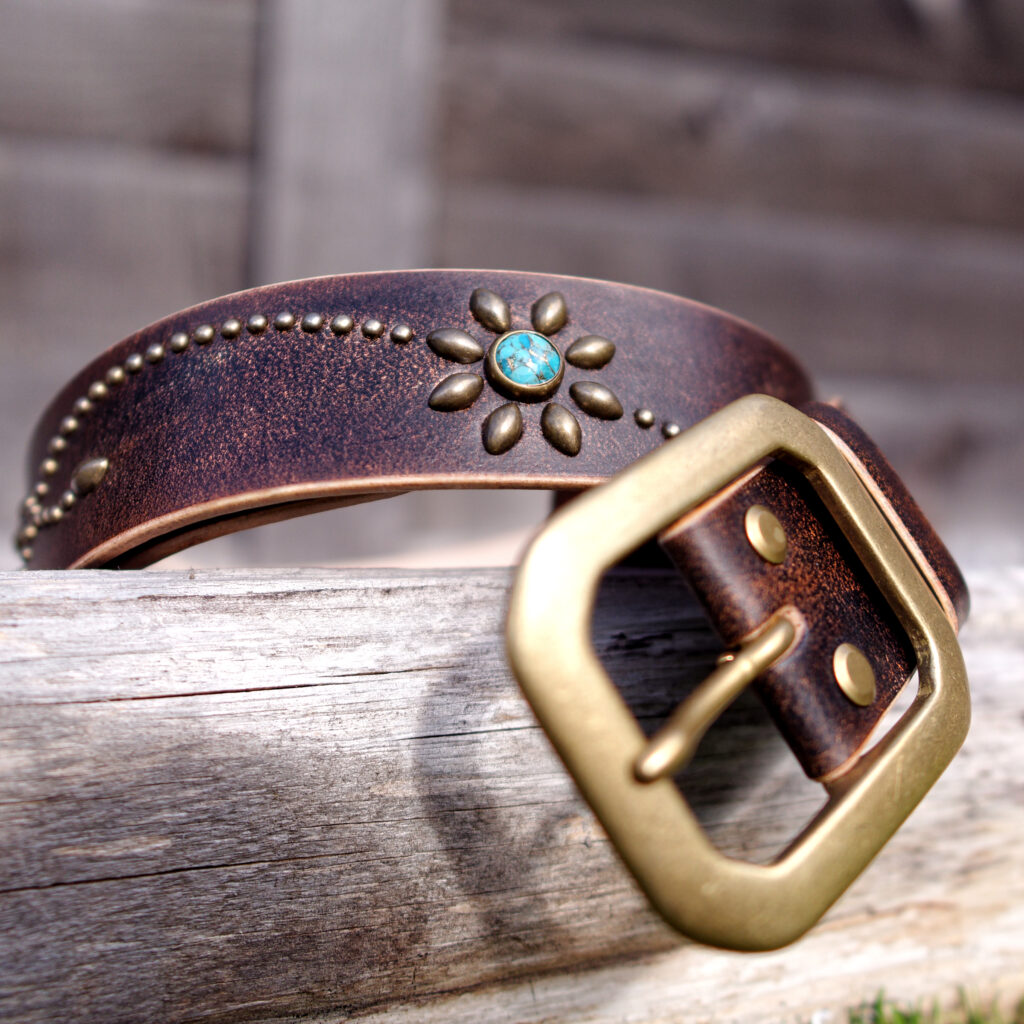
A quick look into novelty belts
For those of you who are familiar with Duke’s work you’ve probably noticed a certain style of his commissioned work: novelty belts. I guess it could be argued that a ‘novelty’ belt is one of the most complex types of belt you can make – it’s probably also one of the least popular styles. Too fancy for many. But Duke loves the look of those belts, he loves the great atmosphere of the originals from the 30s~50s, the clear history and how they look great with so many styles of clothing.
Striving to improve
From what you’ve read already it might not come as a surprise that Duke sets his bar high. No belt goes off his bench unless he’s happy with it and even then he still looks for ways to learn and improve belt by belt.
“Being essentially a carer for my daughter, I am at home a lot and this means I use spare minutes thinking, designing and making belts.”
The process of making a custom belt probably takes longer for Duke than a lot of other belt makers, but then it is also a deliberate choice of his, not rushing through to completion. Maybe it’s because it’s more of a self sustained hobby for him rather than his source of income but I’d wager the highly set bar and respect for the craft plays a big part as well.
Custom belt freedom
Choices, choices and more choices. Ordering a belt from Duke gives you a lot of freedom, there’s no real fixed menu. Any buckle, any leather, any style in any combination – a truly bespoke approach. A lot of his inspiration comes from historical styles that he adapts, but he also invents styles from the customer’s brief. It almost sounds nuts to have so many choices, hard to wrap your head around.
“I’m happy to source materials from all over the world – it’s not efficient in business terms but I think it allows the customer to create something unique.”

Of course an intricately made belt is built from the same foundation as a basic one, so all is possible and Duke helps with advice, design the customer’s idea and even create realistic visuals before the actual work even starts. As Duke puts it, it all comes down to listen to their needs and translate it in a straightforward way.
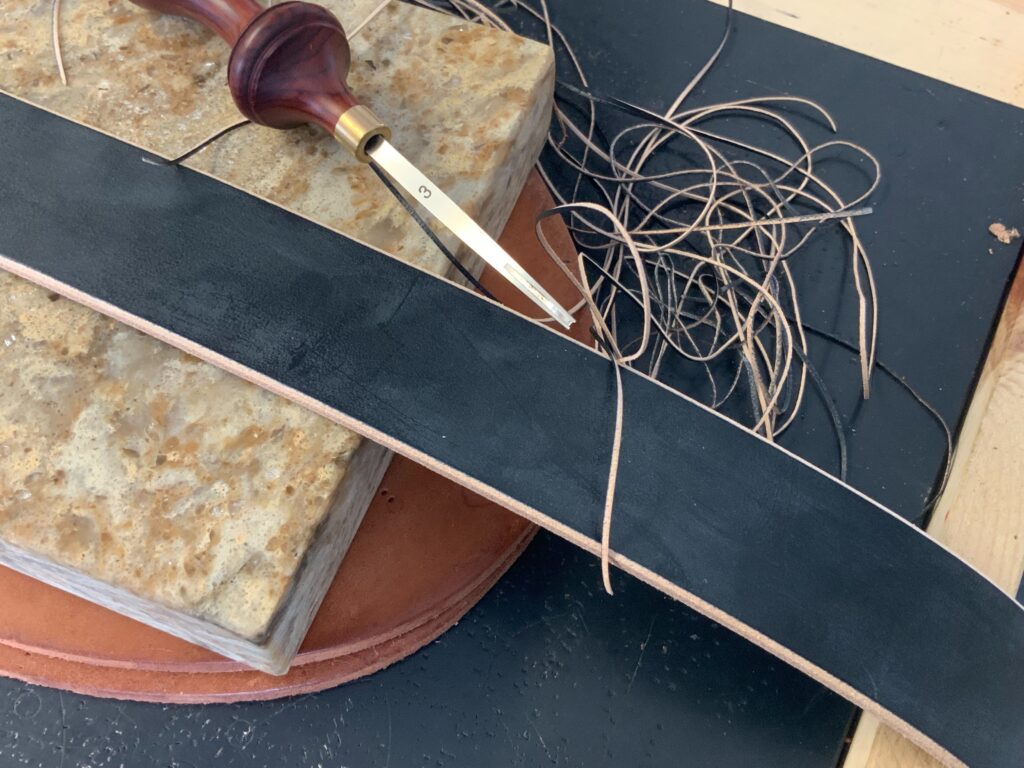
Knowing leather
A more difficult part of the custom belt process is the know-how of how leather works. There’s a difference between looking at a belt from what you think looks good and taking the view on the characteristics of different leathers, what qualities a belt needs. For instance the leather one enjoys in a pair of boots isn’t always the best to use for a belt due to the leathers characteristics. Duke need to cross that difference in knowledge to help the customers realize their vision and make the best possible belt.
We went into a long discussion about leather myths, misunderstandings and what goes into making a good belt. This will have to be a separate piece since we talked so much about it (something to look forward to!) but just to give you a little snippet:
There are lots of different leathers for different reasons, some leathers are great for one aspect but less so for other purposes. As an example: bridle leather, harness leather or stirrup leather were leathers specifically designed for horse tack – they are strong, durable and even comfortable to the horse – so they are perfectly suited to making belts. These leathers are always made from cowhide because horsehide in comparison is extremely inconsistent in its thickness and strength.
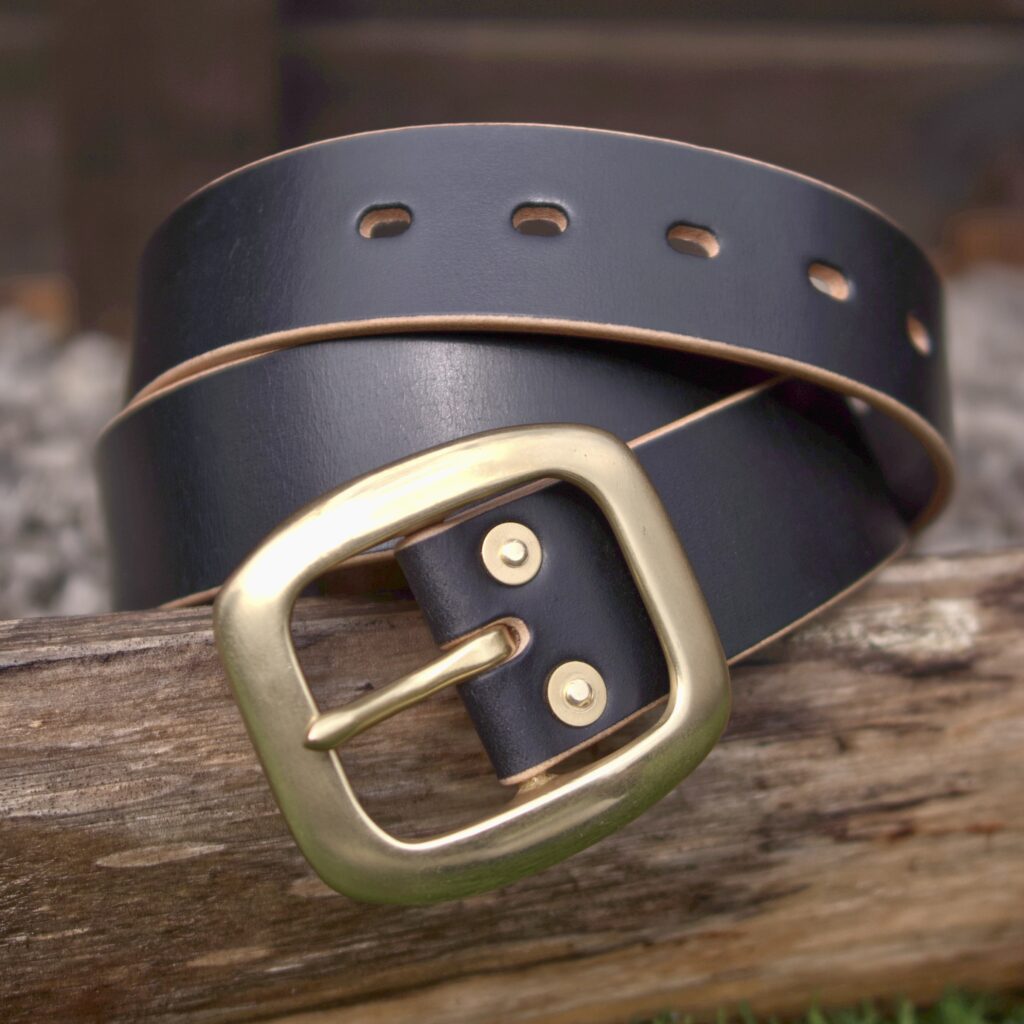
What’s next
There are some interesting things in the pipeline for Duke that we can look forward to. Back when we did the interview he was investigating the ideas of different styles of bags, using both good leathers and unique cotton, linen and wool fabrics.
“Much like with belts I get frustrated looking at some styles.”
Potentially we’ll see a small tool bag, the ubiquitous tote bag and maybe even some larger bags.
Talking about whether he’ll try to scale up his neat work or keep it more like a hobby Duke comes back to saying that this has never been about trying to make money. To use his own words he’ll probably plodd along, creating belts we can’t get anywhere else.
I hope this long read has piqued your interest in what makes a good belt as much as it did mine. And maybe you want to get a custom made belt yourself. Or maybe you have a decent name for his brand, Duke promises a belt in return for a name he could use. Give him a holler on Instagram @duke_mantee.
